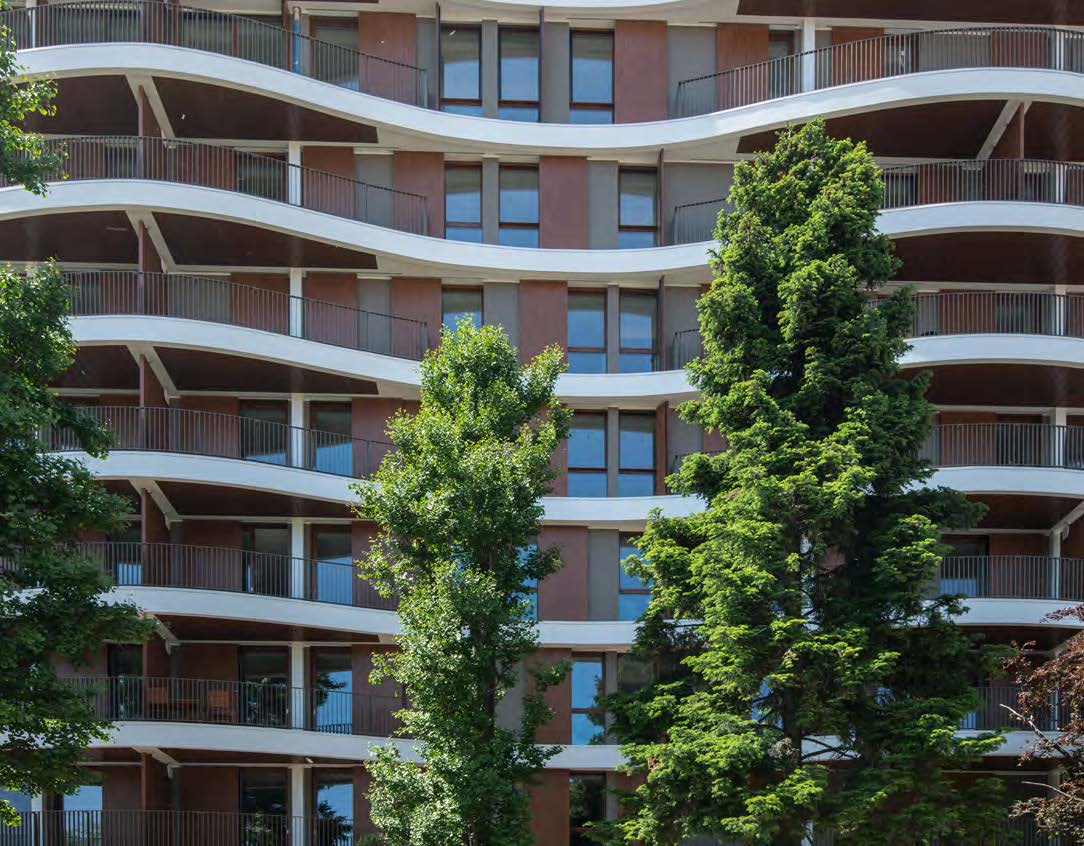The Premio Architettura e Urbanistica Urban File 2021 selected the most significant and virtuous recent works in the city of Milan: 7 of the 8 winning projects are works by Politecnico Alumni. We interviewed some of them to learn about how the city is changing and will continue to change. The interviewees are Paolo Asti, Pasquale Mariani Orlandi, Sonia Calzoni and Sebastiano Pasculli

At the end of the 1980s, at number 10 Via Alserio in Milan, a team of editors from the prestigious publishing house Selezione dal Reader's Digest were hard at work drawing up the World Atlas. Every day, they worked on the oceans and epochs, the sciences and Earths in their own round world of the building at number 10: a building designed by Melchiorre Bega in 1968, who gave the building curves instead of corners, so that it seemed to rotate around the district.
“Unlike the usual city architecture, which is placed right at the edge of the street, this building is placed in the middle of the block and is visible from 360°,” begins Alumnus Paolo Asti, founder of Asti Architetti, who led the building redevelopment project. Today, Alserio 10 is a residential complex, with 70 spacious apartments, each with its own balcony. “We have taken and emphasised the legacy of the curved aspect featured in the original design by creating balconies that chase one another like waves around the whole building,” explains Asti. - The curved line is easy on the eye. It gives you a sense of flowing, growing and transformation. Greenery is an integral component of the façade because people love being surrounded; this green filter is a kind of portal between inside and outside. Nature also influenced our choice of materials: we used a lot of wood or imitation wood materials and, on the ground floor, we used aluminium with a bronze effect. The most pressing issue of our time relates precisely to land: I see no need for further land consumption but rather a better utilisation of it.”


The Isola district, where Alserio 10 stands , best represents the transition from past to future in urban planning:
“Here, the historic Milan of old shops, which have disappeared elsewhere, coexists with the large real estate industry. Milan is a polycentric city, which, given its characteristically dynamic nature, is not restricted to a single city centre, but rather has been able to create many centres.”
This duality of time dominates Paolo Asti's work, who is currently engaged in the redevelopment of the Velasca Tower. Talking about this latest project, Asti says: “Citizens need this iconic piece of 1960s Milan back in the city. The restoration has to make the building functional again by making it seem like nothing has changed from 1956 to 2022. I often stop myself from changing perfect buildings designed by those who have come before me, even if ravaged by time. Because time devastates everything - people and buildings alike.”
MAP is one of the many initiatives created by Alumni Politecnico di Milano. If you want to receive two issues of the magazine in paper format, consider donating..